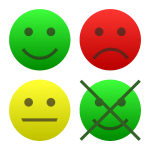The Bias of Language
Publication of research findings in a particular language may be prompted by the nature and direction of the results.
Key Concepts addressed:Details
This blog discusses the issue of language bias, a type of reporting bias. It explains that reporting bias occurs when the publication of some results is favoured over others, most commonly positive results being published more often than negative results. A subtype of reporting bias is language bias, which the Cochrane Bias Methods group defines as ‘the publication of research findings in a particular language, depending on the nature and direction of the results’. It has been speculated that results produced in non-English speaking countries are more likely to be published in English-language journals if they are positive, but other language journals if they are negative. Since the majority of large, international journals are published in English there is potentially more incentive to publish exciting positive results in this language. This creates a biased level of exposure to either positive or negative results to those reading articles in only English or another language. The blog discusses how language bias also has the potential to create flawed systematic reviews (when systematic reviews exclude non-English studies). The blog concludes with two ways in which language bias can be overcome: 1) ensuring reviews include eligible non-English, as well as English studies and/or consistently publishing studies in only one language. There is evidence to suggest both of these may be (slowly) happening. Read the blog
Students 4 Best Evidence (S4BE) is a growing network of students from around the world, from school age to university, who are interested in learning more about evidence-based healthcare (EBH). The network is supported by the UK Cochrane Centre. In addition to the website, the S4BE has a Facebook group and Twitter feed. For more information, read Selena Ryan-Vigs blog which introduces Students 4 Best Evidence.
Browse Key Concepts
Back to LibraryJargon buster
About GET-IT
GET-IT provides plain language definitions of health research terms


